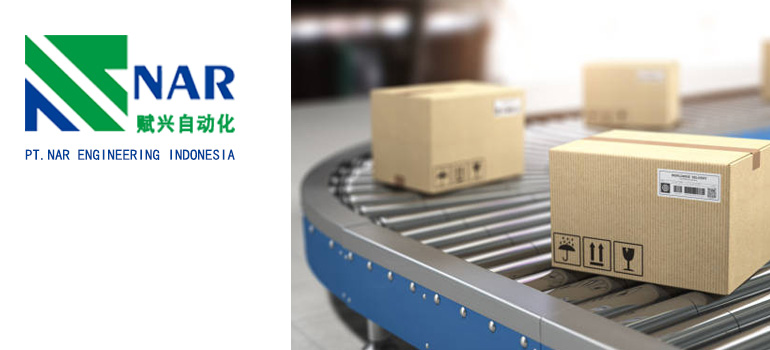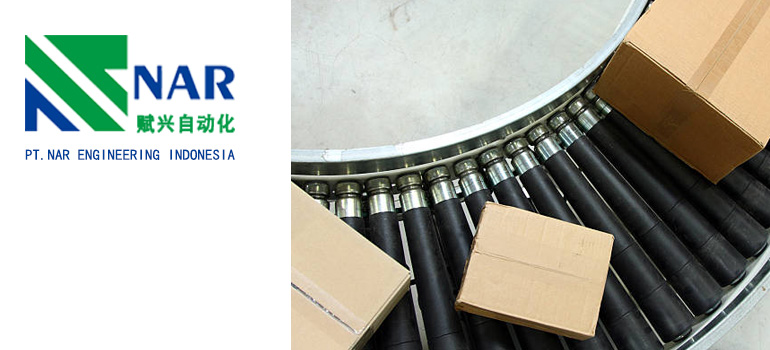Summary:
How to Choose the Right Belt Conveyor Tools for Your Industry
Understanding the Importance of Belt Conveyor Tools
Types of Belt Conveyor Tools and Their Applications
How to Assess the Quality of Belt Conveyor Tool
Cost Considerations When Choosing Belt Conveyor Tools
Best Practices for Implementing Belt Conveyor Tools in Your Operations
Understanding the Importance of Belt Conveyor Tools
In any industrial setting, belt conveyors are crucial for efficient material handling. These systems streamline the transport of goods, but to keep them running smoothly, the right belt conveyor tools are essential. Let’s delve into why these tools matter and how they impact various industries.
Why Belt Conveyor Tools Matter in Different Industries
Every industry has unique conveyor needs, and thus, the tools used for belt conveyors vary accordingly. Understanding the role of these tools helps address specific operational challenges. For example, in the food processing industry, tools must be resistant to corrosion and easy to clean to meet hygiene standards. In contrast, mining operations require tools that can withstand high stress and harsh environments. By using industry-specific tools, businesses can significantly enhance operational efficiency, extend equipment lifespan, and reduce downtime, leading to better overall performance.
Common Challenges Addressed by Belt Conveyor Tools
Belt conveyors face several challenges in real-world applications, such as handling diverse materials, dealing with harsh operational conditions, and performing necessary maintenance and repairs. Specialized belt conveyor tools are designed to tackle these issues effectively. For instance, certain cleaning tools help remove residues from conveyor belts, while advanced diagnostic tools monitor system health in real-time, identifying potential issues before they become critical. Using the right tools reduces the risk of equipment failure and ensures a more reliable production line.
Understanding the importance of these tools in addressing specific challenges helps businesses make informed decisions about tool selection and usage. This not only resolves existing problems but also prevents future issues, ultimately contributing to long-term operational success and efficiency.
Types of Belt Conveyor Tools and Their Applications
When it comes to belt conveyors, having the right tools can make a significant difference in efficiency and productivity. Different tools serve various purposes, from routine maintenance to advanced performance enhancement. Understanding these tools and their applications will help you choose the best ones for your specific needs.
Basic Tools for Belt Conveyor Maintenance
Hand Tools for Regular Upkeep
Regular maintenance of belt conveyors often involves basic hand tools. Wrenches, screwdrivers, and pliers are essential for tightening bolts, adjusting components, and performing minor repairs. These tools help keep the conveyor system in good working condition by addressing wear and tear issues promptly.
Replacement Parts and Accessories
Over time, conveyor belts and components can wear out and need replacement. Common replacement parts include belts, rollers, pulleys, and bearings. Having a stock of these critical parts on hand ensures that minor issues can be quickly addressed without significant downtime.
Routine Maintenance Tools
Routine maintenance involves more specialized tools, such as belt alignment devices and tension gauges. These tools help ensure that the belt runs smoothly and is properly tensioned, which is crucial for preventing excessive wear and reducing the risk of conveyor failure.
Advanced Belt Conveyor Tools for Enhanced Performance
Diagnostic and Monitoring Tools
Advanced diagnostic tools, like vibration sensors and temperature probes, monitor the health of the conveyor system in real-time. These tools help detect early signs of potential issues, such as misalignment or overheating, allowing for proactive maintenance before problems escalate.
Automation Tools
Automation tools, such as programmable logic controllers (PLCs) and sensors, enhance conveyor performance by integrating automated controls. These tools help optimize conveyor speed, improve material handling precision, and streamline the overall operation of the conveyor system.
Specialized Tools for Specific Conveyor Types
Different types of conveyors, such as inclined or magnetic conveyors, require specialized tools. For instance, incline belt cleaners are designed to handle the challenges of steep inclines, while magnetic conveyor tools are tailored for handling ferrous materials. Using tools specific to your conveyor type ensures optimal performance and reduces the risk of damage.
By understanding the various types of belt conveyor tools and their applications, you can select the most appropriate tools for your system’s needs. Whether performing routine maintenance or enhancing system performance, the right tools are key to maintaining an efficient and reliable conveyor operation.
How to Assess the Quality of Belt Conveyor Tools

Selecting high-quality belt conveyor tools is essential for maintaining optimal performance and extending the lifespan of your conveyor system. Evaluating these tools involves considering several factors that affect their durability, effectiveness, and overall value. Here’s how to assess the quality of belt conveyor tools:
Criteria for Evaluating Belt Conveyor Tools
Durability and Material Quality
The quality of materials used in belt conveyor tools directly impacts their durability and performance. Look for tools made from high-grade metals, alloys, or composite materials that can withstand the wear and tear of industrial environments. Tools that are built to last will save you money in the long run by reducing the frequency of replacements and repairs.
Compatibility with Existing Systems
Ensure that the tools you select are compatible with your current conveyor system. This includes checking for proper fit, functionality, and integration with other equipment. Tools that are specifically designed for your type of conveyor will perform better and help avoid issues related to improper fit or operation.
Brand Reputation and User Reviews
Research the reputation of the tool manufacturer and read user reviews to gauge the reliability and performance of the tools. Established brands with positive feedback are generally a safer choice, as they have a track record of delivering high-quality products. User reviews can provide insights into real-world performance and any potential issues.
Comparing Tools from Different Manufacturers
Key Features to Look For
Compare the features of tools from different manufacturers, such as advanced functionality, ease of use, and additional capabilities. Tools with features like enhanced ergonomic designs or integrated diagnostics can offer better performance and user experience.
Price vs. Performance Considerations
Evaluate the price of the tools in relation to their performance and quality. While it might be tempting to go for the cheapest option, consider the long-term benefits of investing in higher-quality tools. A higher upfront cost may be justified by better durability and fewer maintenance issues.
Warranty and Support Options
Check the warranty and support options provided by the manufacturer. A comprehensive warranty can provide peace of mind and protect your investment. Additionally, good customer support ensures that you can get assistance if any issues arise with the tools.
By carefully assessing these factors, you can make informed decisions when selecting belt conveyor tools, ensuring that you invest in high-quality equipment that will contribute to the efficiency and reliability of your conveyor system.
Cost Considerations When Choosing Belt Conveyor Tools
When selecting belt conveyor tools, cost is a significant factor, but it should be balanced with considerations of quality, performance, and long-term value. Here’s how to approach the cost considerations to ensure you get the best tools for your investment:
Budgeting for Essential Belt Conveyor Tools
Initial Investment vs. Long-Term Savings
When budgeting for belt conveyor tools, it’s essential to weigh the initial investment against the potential long-term savings. High-quality tools may come with a higher price tag initially but can offer greater durability and fewer maintenance issues over time. This can lead to overall cost savings by reducing the frequency of replacements and repairs, and minimizing downtime.
Cost of Maintenance and Repairs
Consider the ongoing costs associated with maintaining and repairing the tools. Tools that are robust and well-designed will generally incur lower maintenance costs. Evaluate whether the tool requires special servicing or frequent parts replacements, which can add to the total cost of ownership.
Availability of Spare Parts
Check the availability and cost of spare parts for the tools you are considering. Tools with easily available and affordable spare parts can reduce the long-term costs of upkeep. Ensure that parts such as belts, rollers, and bearings are readily accessible and not prohibitively expensive.
Balancing Quality and Affordability
Finding the Best Value for Your Money
Balancing quality and affordability involves finding tools that offer the best performance for their cost. Look for tools that provide a good mix of durability, efficiency, and price. Reading reviews and seeking recommendations can help identify products that offer strong value without compromising on quality.
Avoiding Common Pitfalls in Cost-Saving
Be cautious of extremely low-cost tools, as they may be made from inferior materials or lack necessary features. Sometimes, saving money upfront can lead to higher costs in the long run due to poor performance or frequent failures. Evaluate the total cost of ownership rather than just the purchase price.
Examples of High-Quality Yet Affordable Options
Research and compare different brands and models to find examples of high-quality tools that are also affordable. Many reputable manufacturers offer tools that are both budget-friendly and well-made. Look for options with positive reviews and strong warranties to ensure you are making a wise investment.
By carefully considering these cost factors, you can make informed decisions that balance initial expenditure with long-term benefits, ensuring you invest in belt conveyor tools that offer both performance and value.
Best Practices for Implementing Belt Conveyor Tools in Your Operations
Effectively implementing belt conveyor tools in your operations requires careful planning and execution to ensure that the tools integrate seamlessly with your existing systems and provide maximum benefit. Here are some best practices to follow for successful implementation:
Integrating New Tools into Your Existing Conveyor System
Steps for a Smooth Integration Process
When introducing new tools into your conveyor system, start by assessing the current setup and identifying areas where the new tools will be used. Plan the integration process carefully, including any necessary adjustments to the conveyor system. Ensure that the tools are installed according to manufacturer guidelines and that they fit properly within your existing infrastructure.
Training Staff to Use New Tools Effectively
Proper training is essential to maximize the benefits of new tools. Provide comprehensive training for your staff on how to operate and maintain the tools. This includes hands-on demonstrations and detailed instructions on best practices. Well-trained employees are more likely to use the tools effectively, leading to better performance and fewer issues.
Adjusting Operational Procedures for New Tools
After integrating new tools, evaluate and adjust your operational procedures as needed. This might involve updating maintenance schedules, revising workflow processes, or modifying safety protocols. Ensure that all changes are communicated clearly to the team and that they understand how the new tools impact their tasks.
Monitoring and Evaluating Tool Performance
Setting Up Performance Metrics
Establish clear performance metrics to evaluate the effectiveness of the new tools. These metrics could include factors such as tool efficiency, maintenance frequency, and impact on overall conveyor system performance. Regularly review these metrics to assess whether the tools are meeting your operational goals.
Regular Assessment and Feedback Mechanisms
Implement a system for regularly assessing the performance of the tools and gathering feedback from users. This could involve scheduled reviews, performance reports, and user surveys. Collecting feedback helps identify any issues or areas for improvement, allowing you to make necessary adjustments.
Continuous Improvement Strategies for Tool Usage
Use the insights gained from performance assessments and feedback to continuously improve tool usage. This might involve refining maintenance practices, updating training materials, or making operational adjustments. Embrace a culture of continuous improvement to ensure that your tools remain effective and contribute to ongoing operational success.
By following these best practices, you can ensure a smooth implementation of belt conveyor tools, optimize their performance, and enhance overall operational efficiency. Effective integration and ongoing evaluation are key to leveraging the full potential of your conveyor tools.

